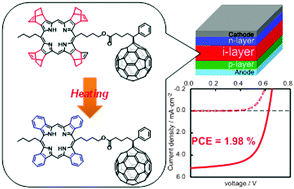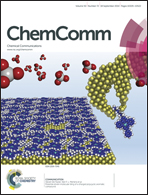Direct comparison of a covalently-linked dyad and a 1 : 1 mixture of tetrabenzoporphyrin and fullerene as organic photovoltaic materials†
Abstract
A p–i–n organic photovoltaic cell with tetrabenzoporphyrin (BP), a BP–C60 dyad and PCBM for the p-, i- and n-layers, respectively, gave a better fill factor and power conversion efficiency than the corresponding p–i–n cell having a 1 : 1 blend film of BP and PCBM as the i-layer.


 Please wait while we load your content...
Please wait while we load your content...